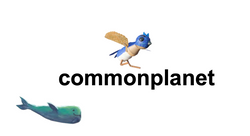The Flounder, a bottom feeder living thousands of feet under the ocean, quietly laying on the sand waiting for a prey to swim near it. I remember when I was about 8 years old, I went fishing for flounders. When the line was dropped, I remember looking over the edge, seeing the weight and the bait that was hooked onto the line, falling deep into the ocean. A few seconds later, I heard a slight thud as the end of the line hit the ocean floor, and I remember thinking to myself how quiet and peaceful it must be down there.
In Tuvaluan mythology, there is a story called “te Pusi mo te Ali '', which explains how the flounder got it’s flat body. Tuvalu is a country that is made up of a small chain of islands. Tuvalu is located in the Polinesian region. This story is about the eel and the flounder, who were once great friends. One day, the flounder and the eel decided to test which one of them was stronger. They decided to determine their strength by lifting a heavy rock. When the eel tried to lift the rock, the rock rolled on its back, making the eel’s body grow thinner, allowing the eel to fit into the small cracks in rocks. When the flounder tried to lift the rock, the massive boulder was too heavy for her, making the flounder’s body flat like a pancake. In the story, it shows that at the end of the competition, the flounder and the eel both leave in shame, never to be friends again.
What the story doesn’t explain are the Star Flounder’s unique markings. The star flounder’s body is immediately recognizable with its distinct yellow and black stripes on the fins and its body, which is about only an inch thin. The flounder’s body is light tan and their stripes are dark black. It spends most of its life under the sand. All flounders’ bodies are covered with a rough pattern that mimics the sand in which it lays under. Some flounders such as the peacock flounder can change color to blend in with its surroundings. To get under the sand, it wriggles its flat body, into the bottom of the ocean. But, it burrows itself not deep, but rather shallow, giving it the freedom to leave rapidly, when necessary. Once out from the sand, it can only travel at a speed of about ~.80 kilometers per hour. The speed of the flounder is slow compared to the average speed of fish.
When lying under the sand, the flounder is not just resting. Its eyes are the only part of its body that peeps out, and it looks for prey. The flounder is a predatory fish that feasts on the small creatures that swim near it. Once a fish is near, the flounder strikes by thrusting itself towards the fish with its mouth wide open. At just one glance, you may think that the flounder doesn’t hunt for its food, as it doesn’t have the sharp claws like a crab, or the hundreds of rows of teeth like the shark. Yet, the flounder’s have small, but spiky teeth, just big enough to grip the small fish and crustaceans that it eats.
The flounder is one of the most underrated fish. Not popularly eaten like the salmon, or tuna. Not kept in zoos often because it hides itself under the sand. This limits the world from
seeing its beautiful stripes, covering the fins, the uniqueness of its body, or the hunting method that is not found among other species of fish. One of the only times a flounder has been a part of mainstream media was when it was depicted in The Little Mermaid, but unlike what it’s name “Flounder” suggests, the fish is actually a tropical yellow fish with teal/blue stripes on its body. Like many people in the world, the flounder is extremely underrated. Its best qualities are hidden from the world, as they aren’t appealing, but truly, the flounder is a very interesting creature.
From its flat body, to its distinct stripes, the flounder is not a very known or seen creature. Its introverted personality makes it not seen to the world. Sometimes, like the flounder, I wish I could hide under a layer of sand. When I have an embarrassing stain on my shirt, or during a bad hair day, I just want to hide under the sand, hiding myself from the outside world.
Benjamin Kim (June 2022)

